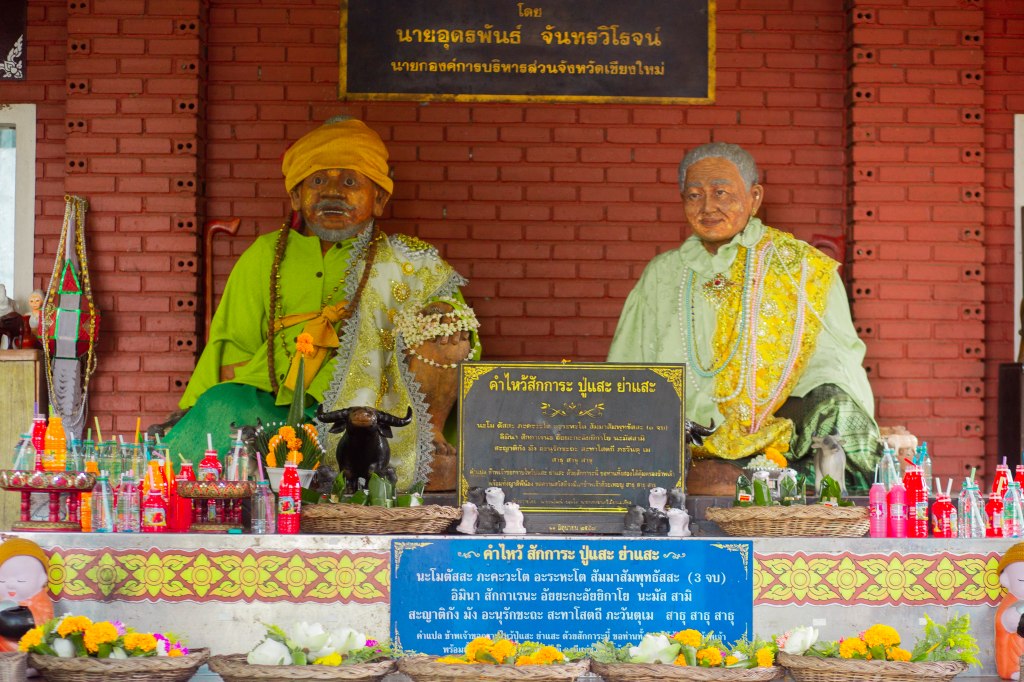I would like to announce the release of my new pamphlet with Hadean Press, titled Thai Spirit Cults: On Mediumship and Spirit Veneration in Thailand. The physical copies and EPUB are available to be purchased via Hadean Press’ website.
https://www.hadeanpress.com/shop-guides/p/thai-spirit-cults
This piece of writing has been in progress ever since February 2023. During the process of researching and writing, I was able to make a trip to Chiang Mai to pay respect to the land upon which one of my parents and their parents before them was born. I also had the opportunity to personally visit the shrine of Pu Sae Ya Sae to show my devotions and ask for permission to share their tale with the world.
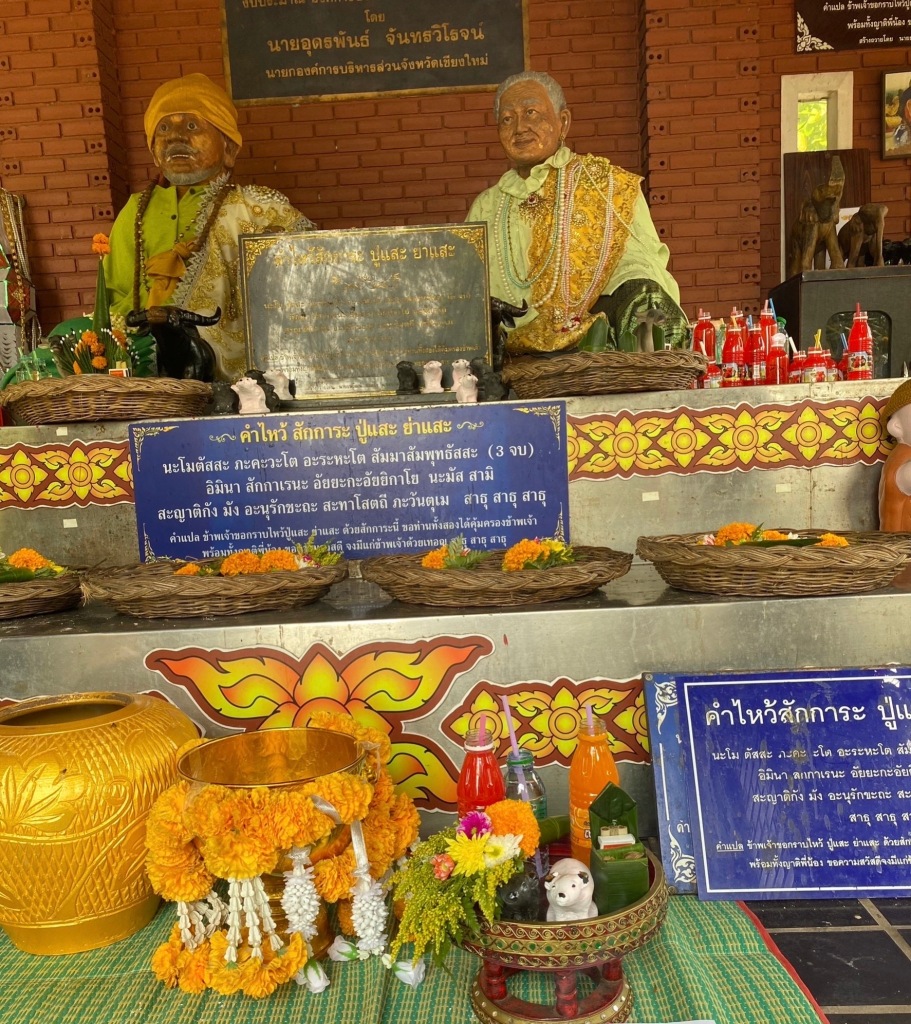
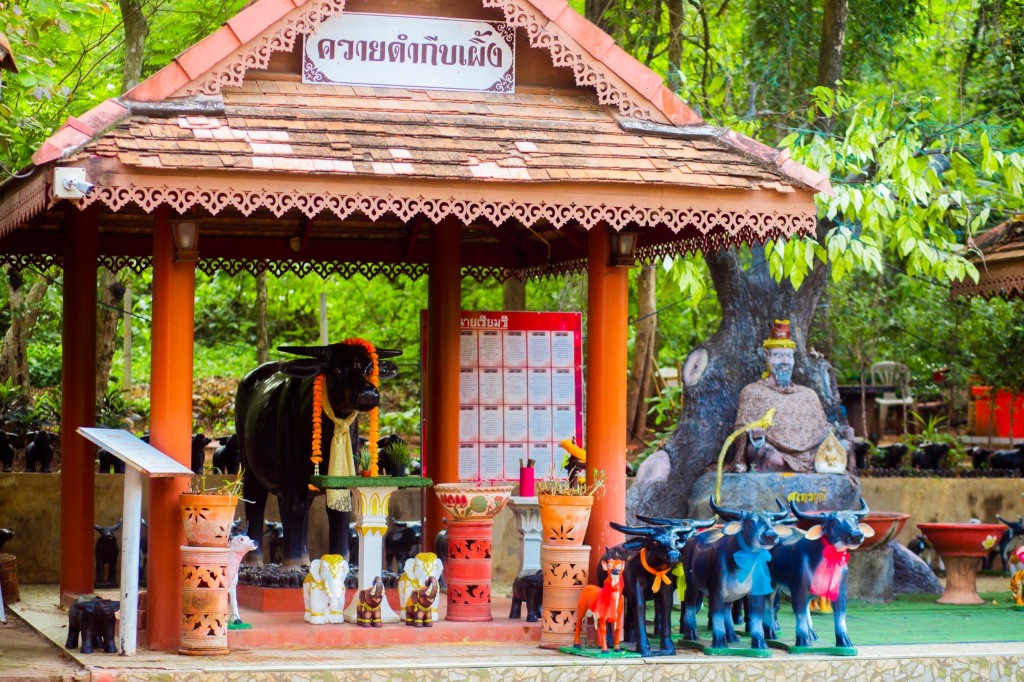
Some people who has been following these blog may recall my now removed blog post The Manohra Dance-Drama: An Examination of Pleiades and Orion Through the Lens of Thai Folklore and Folk Practices. It is for the fact that parts of the blog post has been turned into the published pamphlet that I have removed the post. Now that the pamphlet is released however, I would like to (re-)share my thoughts on the legend of Manohra and Phran Boon below as mini-companion piece to the Thai Spirit Cults pamphlet.
Many may already be familiar with the basic structure of the myth of the Pleiades. But to those unaware, the Greek myth of the Pleiades could be surmised with how the Pleiades are the seven daughters of the Titan Atlas and the Oceanid Pleione: Maia, Electra, Taygete, Celaeno, Alcyone, Sterope, and Merope. When Atlas was forced to carry the heavens on his shoulders, Orion began to pursue all of the Pleiades. The hunt went on for seven years, and in order to prevent the sisters from being caught, Zeus transformed the sisters first into doves, and then into stars. The seven sisters thus became the seven stars of the Pleiades constellation, and the constellation of Orion is said to still pursue them across the night sky. Yet, there also exists an alternative retelling where all seven sisters ended up committing suicide as they were so saddened by either the fate of their father, Atlas, or due the loss of their siblings, the Hyades.
Over a year ago, Jessica Hart (@jess.of.the.harts on IG) gave a presentation on the tale of the Pleiades and Alcyone, reviewing familiar European stories before examining wider patterns that emerge when considering Pacific, Siberian and Japanese folklore. In the presentation, Hart outlines six different Pleiadean motifs that often come up in folktales from across the globe, the motifs being that of 1) water, 2) bird-women, 3) gender taboos, 4) grief and 5) music / dancing. I eagerly urge those interested in learning more to go watch Hart’s presentation for it truly is a heartfelt and well-researched talk on the Pleiades. With those motifs established, I would like to explore some local Thai folklore related to the Pleiades.
In Thailand, the Pleiades are also associated with birds— in this case, with chickens. The Pleiades are known here as the Dao Luk Kai which translates to the ‘Chick Stars’. A folk tale tells of a poor elderly couple who lived in a forest. The couple raised a family of chickens: a mother hen and her six or seven chicks. One day, a monk arrived at the couple’s home, and it is customary for offerings to be given to monks when they pass by. Worried that they had no suitable food to offer him, the elderly couple contemplated cooking the mother hen. The hen overheard the conversation and rushed back to the coop to say farewell to her children. She told them to take care of themselves, and that her death would repay the kindness of the elderly couple, who had taken care of all of them for so long. As the mother hen’s feathers were being burned over a fire, the chicks threw themselves into the fire to die along with their mother.
The tale above bears some similarity to the Pleiadean motifs as outlined by Jessica Hart. First, the Pleiades are associated with hens and chicks whom are avians. Secondly, it could be said that the seven sisters are represented by the seven chicks (or the six chicks plus the mother hen, to become seven). The decision for the chicks to commit suicide over the grief of their mother is also reminiscent of how the Pleiades are sometimes said to have committed suicide over their grief for Atlas’ fate.
Yet, it could also be arguable that aside from the tale of the Chick Stars, there exists another Thai folktale connected to the Pleiades: the tale of Manohra. A transcription of the folktale and information on the Nora dancers are available to be read via my pamphlet. However, even that is merely an abbreviated version. The full version is an epic in itself, and even then there are several versions of the tale, both oral and written. A study by Ginsburg (1971) examines the various versions of the folk tale that was found to be written down throughout history, including a Pali text, a text within the National Library, and a text found at Songkhla. These versions often have details that are glossed over in abbreviated retellings, such as how the hunter won the favor of a naga lord who then taught him how to catch the kinnaree. Likewise, in the Pali text, it is the king who suffers a nightmare— a nightmare that happened to be about ‘intestines’ which ‘flow out and encircle the world three times’. This could perhaps be linked to how far eastern tales related to the Pleiades often have imagery of ‘guts’ in them. One example of this ‘guts’ motif occurs in the Japanese of Harima Fudoki where a drowned concubine has her internal organs float upwards to become individually the six visible stars of the star cluster Pleiades (Palmer, 2010).
The water connection becomes evident in the scene of the kinnarees bathing. Additionally, Manohra’s guile of using her celestial dance to distract the guardsmen and archers also fits with how the Pleiades are said to be associated with music and dancing. In traditional Thai beliefs, it is similarly claimed that the kinnaree are renowned for the beauty of their dance, song and poetry, and thus they are a traditional symbol of feminine beauty and grace. This is what sets the bird-maiden apart from your average human being, and the idea of them being Other or different from humans is further exacerbated by how Manohra has to wash herself for seven years, seven months and seven days in order to free herself from the human scent— note the emphasis on the number seven. The motif of a celestial maiden being tainted by humanity and unable to return to the heavens due to said human taint is also something present in the Japanese Tennyo folktale as well. Finally, is the motif of Manohra being hunted by a hunter, just like how the Pleiades were hunted by Orion. A clear difference in the tale is how Manohra ended up in a happy marriage with a prince rather than being partnered with the hunter himself. It is interesting to see too how Manohra was ordered to be sacrificed by fire, just like how in the tale of the Seven Chicks the Mother Hen was burned over a fire. Thus, it is safe to say that there is ample evidence supporting how the tale of Manohra is likely a Pleiadean tale, interpreted via folk lens.
The tale of the Pleaides would not be complete without the mention of Orion. Likewise, Manohra’s story would not exist if not for the Hunter whose cunning was used to steal her kinnaree wings. In the written transcription of the Manohra folktale, the hunter who trapped and captured Manohra is given the name Phran Boon. The word Phran is a title that translates literally to ‘hunter’, whilst Boon refers to the name of the hunter. As elaborated upon within Ginsburg (1971), the Pali version of the Manohra story includes a subplot of how Phran Boon once gained the favor of the nagas and was welcomed into the naga underworld for seven days. It is assumed that during his time there, he was able to gain various material and spiritual gifts. When the hunter stumbled across the bathing kinnaree, the story goes on to explain how the hunter went to the forest-dwelling hermit to ask for advice in catching the kinnaree, to which the hermit explained that a naga noose was needed. The hunter then obtained the said noose with some protests from the naga, and used the noose to capture Manohra.
The inclusion of nagas into the story is one that I find to be fascinating, for there appears to be a historical relationship between bird-women and serpentfolk. For example, when it comes to the ‘crane dance’ as performed in Delos, in Ancient Greece, the Ancient Greek word for crane, geranos, is related to a homonym from the root *-ger, meaning to wind, ‘as of rivers and serpents’. The following quote is taken from Singer et al (2019), expanding upon this:
‘[l]ike so many other old maze dances, it probably originated as an imitation of the winding path of a serpent. [I]nscriptions [found on Delos] indicate that the dancers carried rhymoi – a word over which there has been great controversy. It actually seems to mean “ropes”; and it is highly possible that in the classical period, at least, the dancers may have carried a long rope-like or garland-like object suggestive of a serpent. The ritual carrying of a large snake (or a replica of one) in a dance is not without parallel. [Compare the Chinese dragon dance.] As we have noted, the Minoan Cretans seem to have had similar dances; and from them the Delian dance may well have stemmed. As performed by Theseus and his companions in the legend, the geranos is clearly a winding maze or “snake dance.”’
Thus, there appears to be some connection between the ‘crane dance’ and what may be considered the ‘snake dance’. It may also be possible the ‘ropes’ were used in the aforementioned crane dance as well. Naturally, this creates a possible connection to how the hunter of Manohra caught her by using a ‘naga lasso’— a snake/serpent rope, of sorts. Moreover, the same way the Manohra is associated with the nora shaman-dancers, the hunter Phran Boon is revered in southern Thailand as a local spirit-deity, referred to as Ta Phran Boon or Grandfather Phran Boon. In the Manohra dance-drama, the role of Phran Boon is a comedic one and the performer playing him traditionally wears a red half-mask. The mask is one of Phran Boon’s sacred symbols, and amulets are commonly made in the shape of the mask. I personally possess one such talisman in my possession, the talisman having been blessed in a Rong Kru ceremony at Wat Yang Yai temple, and I have to say truly that the intricately crafted talisman is a work of art in itself.
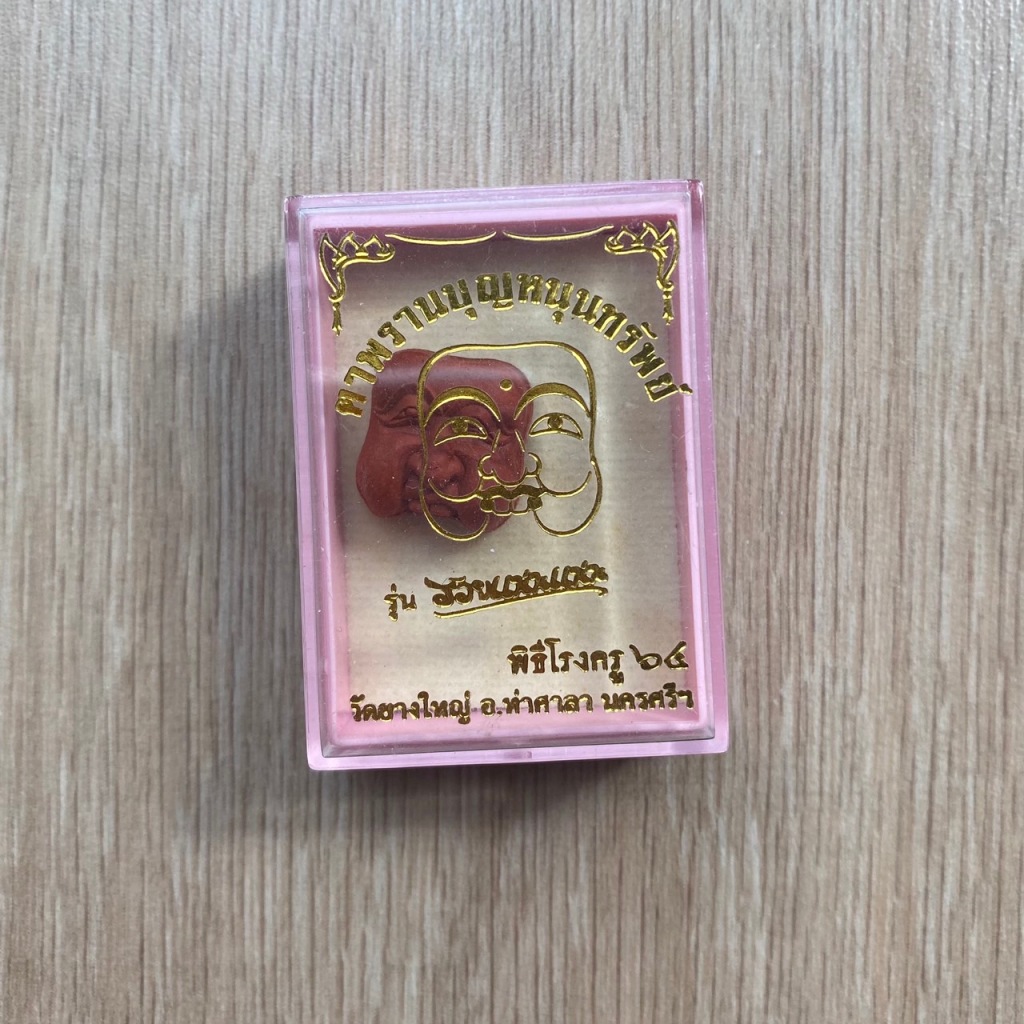
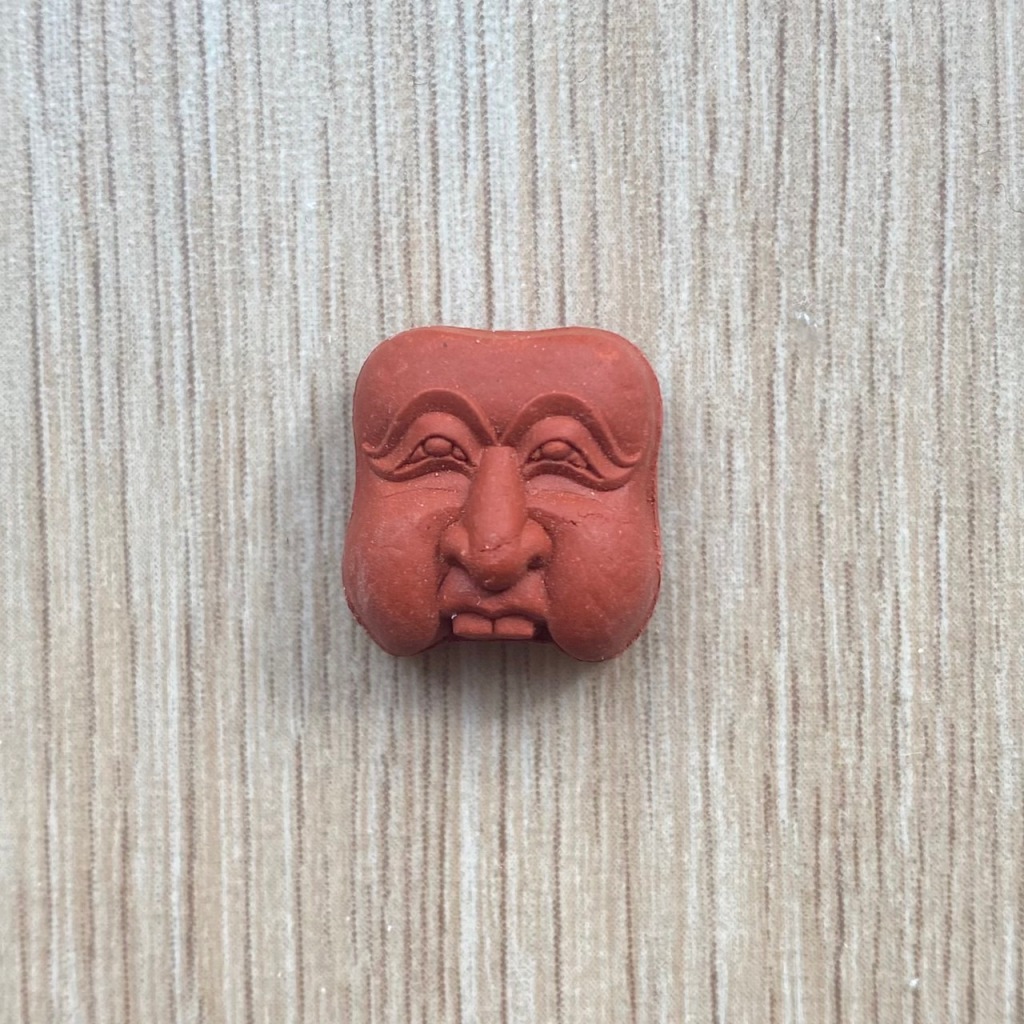
References
Alcyone & Pleiades presentation by Jessica Hart, September 14 2022
Ginsburg, H. (1971) The Sudhana-Manohara tale in Thai: a comparative study based on two texts from the National Library, Bangkok and Wat Machimawat, Songkhla [Preprint].
Palmer, E. (2010). “Slit belly swamp”: A Japanese myth of the origin of the pleiades? Asian Ethnology, 69(2), 311-33
Parichat Jungwiwattanaporn. (2006). In Contact with the Dead: Nora Rong Khru Chao Ban Ritual of Thailand. Asian Theatre Journal, 23(2), 374–395. http://www.jstor.org/stable/4137060
Pengkaew, Niphatporn (2000), Tai Baan Duu Dao (Folk Thais Watching the Stars). Bangkok: Siam Press.Singer, T., Cashford, J., & Roque, C. (2019). When The Soul Remembers Itself: Ancient Greece, Modern Psyche. Routledge, Taylor et Francis Group.
